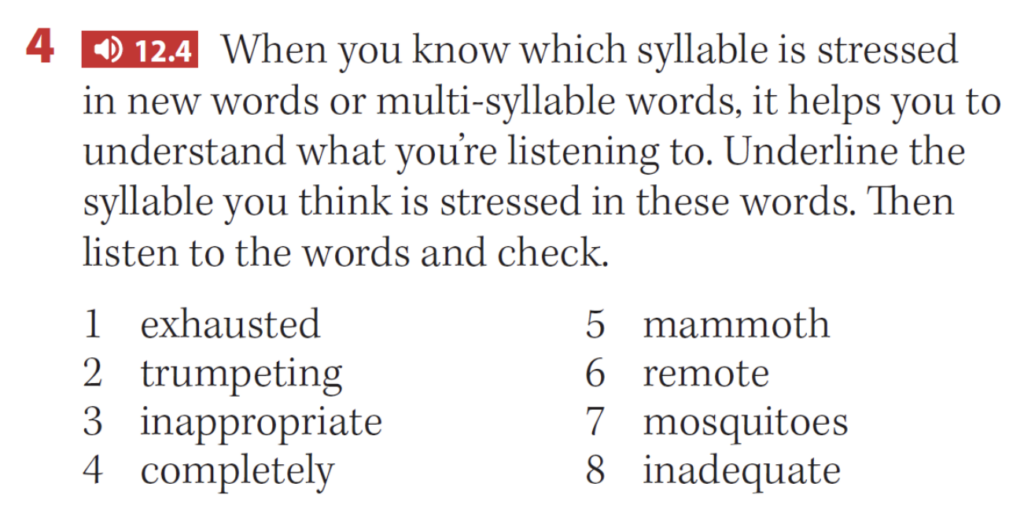Are your students struggling with parts of the IELTS or Cambridge exams? This post is for you!
The value of IELTs and Cambridge exams
High-stakes exams are valuable to English learners for education, employment, immigration, and personal development. Many learners hope to gain an IELTS or Cambridge certificate to prove English ability and create new opportunities.
Although exam-specific language study can be helpful during the latter stages of exam preparation, many learners solely focus on past papers and exam techniques before they are ready. In most cases, raising the general level of English by building a strong foundation in vocabulary, grammar, and the receptive and productive skills is vital. This is why a holistic approach of integrating exam practice into a general English program is very effective for exam success — simultaneously teaching language skills and systems while familiarizing students with exam-style tasks.
In this post, we’ll share some strategies to start preparing your students for the listening and writing parts of the IELTS and Cambridge exams.
Listening strategies
If your students struggle with IELTS or Cambridge listening tasks, you can help them by incorporating top-down and bottom-up listening strategies into your lessons. By consistently explaining the cognitive processes involved, you can help learners become more aware and effective listeners. If English learners can understand enough of what they hear through individual words (bottom-up), they can use their background knowledge and their brain (top-down) to fill in any gaps.
Top-down listening strategies
Top-down listening strategies help learners understand more of what they hear by activating prior knowledge about a topic or theme. This real-life skill involves predicting, using background knowledge, inferring, understanding intention, and catching the gist.
In this example from the Intermediate level of Life, Third Edition, students are explicitly told that using their background knowledge (activating schema) will help them understand what they hear. In the pre-listening task, they discuss flags and the meaning of colors. When they already understand that red often means anger or passion, it makes it much easier to catch it in the listening text. To apply this to a listening exam, we can tell students that they should use the time before they listen to read the questions and answers carefully and look for clues as to what they will hear. In this lesson, exercise 5 is a gap-fill task — a very common listening exam task type — that reinforces top-down strategy use.
Bottom-up listening strategies
Bottom-up listening strategies help students decode words and sounds to create meaning. These include recognizing phonemes, identifying syllables, noticing stress and intonation patterns, identifying grammatical structures, and listening for details.
In another example from the Intermediate level of Life, Third Edition, students learn that knowing which syllable is stressed helps them understand new or multi-syllable words. For instance, if students expect the stress in “mammoth” to fall on the second syllable, they might miss it in conversation — even if they know the word — because their brain is listening for “moth” instead of the unstressed /m.əθ/. This activity encourages students to predict which syllable is stressed in the unknown vocabulary before listening and checking. This skill is especially useful in exam settings where unknown words often appear in listening questions.
By developing both top-down and bottom-up listening skills, English learners become more effective listeners, ready to succeed on the listening tasks of international exams. Watch the video below to find out more about teaching, practicing, and assessing listening skills and strategies in your English language classroom with Life and set your students up for exam success!
Writing strategies
If your students are finding the writing parts of the IELTS or Cambridge exams difficult, make sure you cover the types of writing styles and genres they will encounter on international exams. Your students also need relevant writing skills to improve the quality and structure of their writing. Using models and proper scaffolding supports them throughout the writing process and helps with problem areas such as generating ideas.
In this example from the Intermediate level of Life, Third Edition, students learn the opinion essay task type, which can be found in the IELTS and Cambridge exams. The lesson starts with a discussion on a highly relatable topic — instant messaging — to grab students’ attention. Next, they consider if they agree with the author of the model essay, and why. After that, the writing skill section introduces the structure of an opinion essay, before a section on linking words helps with cohesion. Students then choose an essay title that interests them, before writing a first draft, self-assessing, and then peer-assessing a partner’s work. This lesson serves as a template for process writing that can be used for other opinion essay titles. Other common exam writing tasks can be found throughout Life.
The more your students engage with the writing styles and expectations from Cambridge and IELTS, the more confident and relaxed they’ll be during these high-stakes tests.
If you think these types of lessons will help your students, explore the writing sections and more in Life, Third Edition! This video features more tips for integrating writing task types into your lessons, with examples from Life:
Share your favorite exam preparation strategies with us in the comments below.
If you want to hear the listening passages mentioned in this post and take a closer look at the exam preparation resources I shared in my videos, request a Spark sample of Life, Third Edition by filling out the brief form below! Make sure to select Life as your National Geographic Learning program.






Gracias
Thank you for the article.